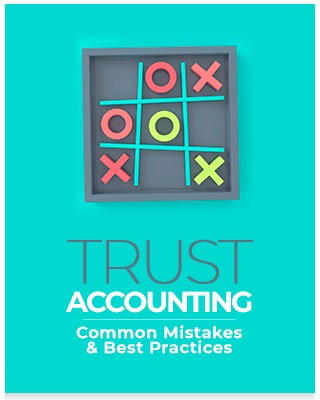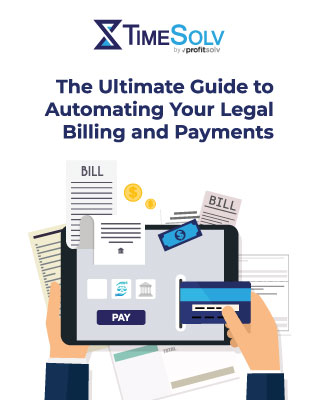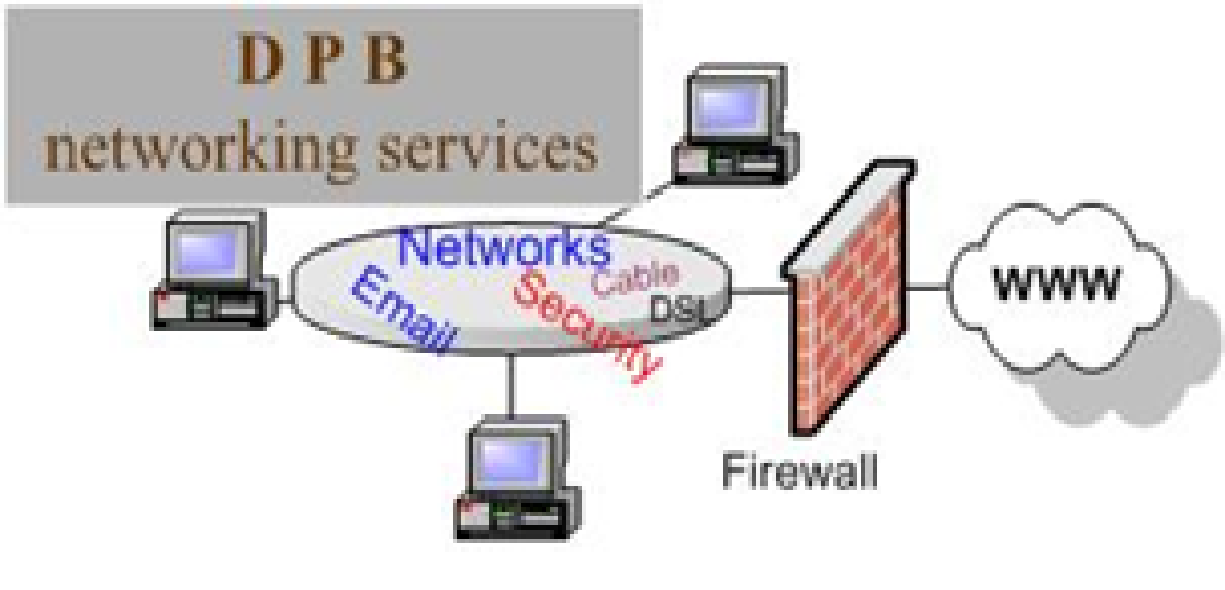When it comes to running a law firm, there are plenty of factors that determine whether you’re successful or not, but one of the most critical is maintaining a healthy cash flow.
More than anything else, your firm depends on a stable cash flow to empower you to cover overhead costs, pay your staff, and invest in things that will keep you moving in the right direction.
While this might seem like common knowledge, maintaining a healthy cash flow isn’t as straightforward as you might think—law firms face unique challenges in managing their finances that can make this process feel like a high-wire balancing act.
With that in mind, we’ve created this article to help busy legal professionals gain a deeper understanding of these challenges and how to rise above them for continued success.
What is cash flow and why is it important for law firms?
What are we talking about when we talk about cash flow? Simply put, it’s the net cash generated by a practice during a reporting period.
Depending on whether you use cash or accrual accounting processes, the way you calculate your cash flow may differ. Regardless of your accounting basis, though, your cash flow is crucial to your firm’s success. Consistent cash flow means you can cover business expenses and invest in opportunities to grow your practice.
Maintaining a healthy cash flow, however, can be challenging for law firms.
Common cash flow pain points for law firms
Managing a firm’s cash flow is a complex process that can often leave legal professionals scratching their heads.
To move your firm from strapped for cash to financially fit, it’s essential to understand what your cash flow pain points are.
Common sources of cash flow pain include:
- Delayed billing processes that can come from factors like the time it takes to handle manual entry to the lag that often comes with sending individual invoices after you’ve provided your services.
- Guesswork with invoicing that occurs when lawyers aren’t efficiently tracking their billable hours and expenses, which can result in your firm losing money due to underbilling, wasted time trying to account for every billable minute, and hunting down receipts.
- Drains on profitability due to your team not effectively balancing billable and non-billable time. This most often happens when legal professionals are bogged down by tasks that could easily be automated.
- Slow client payments because of confusion with invoices or disputes. Invoice issues can drag on for weeks or even months when terms or billing details aren’t clear and easy to understand.
The Ultimate Guide to Automating Your Legal Billing and Payments
To stay competitive in today’s legal landscape, law firms must embrace the power of technology, especially when it comes to billing and payments.
The best way to improve your law firm’s cash flow while also increasing client convenience is 'Automation'.
Download our free guide to improve your legal billing and payment process today!
4 tips your firm can use to resolve cash flow issues
When cash flow issues linger, it can severely decrease profitability, damage client trust, and put the future of your firm at risk. With these four proactive steps, though, you can take control of your firm’s financial future.
1. Audit your cash flow and billing processes
What does a healthy cash flow look like for your law firm? It may be different from other practices, so it’s vital to see where problems (both potential and real ones) lie.
To audit your billing processes, review your financial statements. Where are there billing bottlenecks? Where are payments being delayed, or simply not coming in? What internal factors might be contributing to this?
This information should clarify what steps come next. For example, if your firm’s slow cash flow is accompanied by client questions and disputes about invoices, examine your invoicing process. Are billable hours and expenses being recorded in a way that provides sufficient context? Are they being clearly listed on invoices?
If the answer is no, then you have an opportunity to revisit your time- and expense-tracking tools and processes, as well as your invoice layouts.
2. Consider your payment options
Client payment options strongly influence their payment habits. If your firm still requires clients to hand deliver a check or send it through the mail—even though today’s consumers expect online payment options—you may well see payment cycles slow down.
The alternative: allowing clients to pay online with a secure, legal-specific payment processor. Law firms accepting online payments can receive payment 32% faster, and more than 60% of surveyed law firms said they collected more money when using online payment processing software.
Depending on the practice areas you serve, you also may find that expecting clients to pay in full for services creates a financial burden.
Consider taking a different approach, offering options like:
- Payment plans
- Alternative fee structures
- Retainers
3. Reinforce your client relationships
How accessible is your law firm for your clients? Not just in getting legal questions answered, but in actually working with you?
Law firms that create a smooth, transparent experience for their clients are more likely to see payments rendered quickly. For billing and cash flow optimization, this should include:
- Setting clear expectations about payment terms to encourage transparency. Present your firm’s payment policy at the outset of your relationship and make it accessible on every invoice.
- Sending invoices promptly so clients can budget appropriately. Inconsistent or irregular invoices are more likely to result in inconsistent and irregular cash flow.
- Offering client convenience tools to make your firm more accessible. One user-friendly solution is to provide clients with a secure client portal where they can check their invoices, ask questions, and pay online.
- Prioritizing clear communication about billing (and everything else). A law firm that responds to billing questions and concerns promptly will experience fewer disputes over invoices. Tools like automated invoice reminders can meaningfully increase touchpoints with clients without extra work.
The good news is that these efforts have a holistic benefit for law firms. Strong client relationships not only support a healthy cash flow, but also encourage positive testimonials, referrals, and new business.
4. Use legal technology to optimize your firm’s cash flow
Practicing law requires legal acumen and insight. Running a law firm requires efficient processes and tools designed to support the work of legal professionals.
- Automated time-tracking software that allows busy legal professionals to track their time as they’re working, so there’s no guesswork or wasted time trying to account for hours when they’re ready to invoice
- Invoicing software that provides firms with the ability to generate professional invoices, send batch bills to multiple clients, and get paid faster with immediate invoice delivery.
- Expense tracking tools that enable you to log every expense your firm incurs on behalf of your clients. A great expense-tracking solution will come with tools that help your firm stay on budget and provide you with analytics so you can have a clear vision of your expenses and dial them in accordingly.
- Robust reporting solutions that give you the power to drill into the data for all your processes, from billable and non-billable time spent to employee productivity and project management, so that you can make data-driven decisions and keep things on track.
Ready to take your firm further with a healthy cash flow?
From time and billing solutions that ensure every billable minute and expense are accounted for to client communication and payment tools that keep your clients happy and get you paid faster, TimeSolv has the tools your firm needs to succeed.
Ready to see what TimeSolv can do for you? Sign up for a free trial today.
The Ultimate Guide to Automating Your Legal Billing and Payments
To stay competitive in today’s legal landscape, law firms must embrace the power of technology, especially when it comes to billing and payments.
The best way to improve your law firm’s cash flow while also increasing client convenience is 'Automation'.
Download our free guide to improve your legal billing and payment process today!











